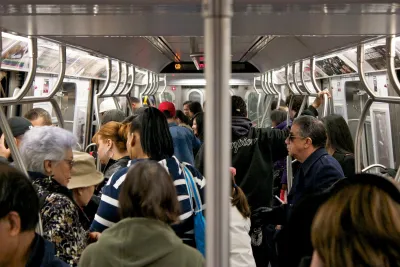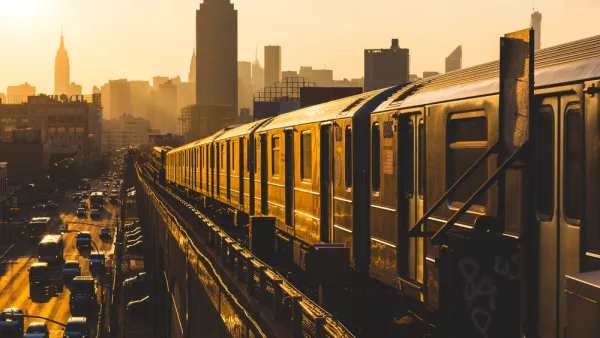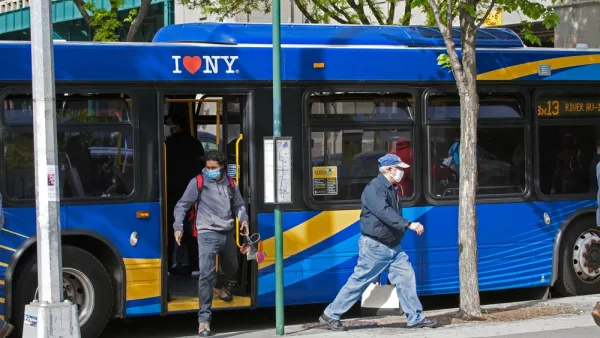The agency plans to negotiate new options for operational funding as farebox and toll revenue lingers far below pre-pandemic levels.

With ridership plateauing at roughly 60 percent of pre-pandemic levels, New York City’s Metropolitan Transportation Authority (MTA) will meet with lawmakers and labor leaders to discuss potential new sources of funding for the agency, which, in the past, depended on ridership revenue for half of its operating costs. If current levels of farebox and toll revenue hold steady, MTA faces a $2.6 billion budget shortfall in 2025, reports Michelle Kaske in Bloomberg CityLab.
According to a quote from Rachael Fauss of Reinvent Albany, “The best case is that they get new, ongoing, dedicated state aid. Not sort of a one-shot thing because the problem of reduced ridership isn’t going away anytime soon.”
Potential options for new funding sources include new sales taxes, a common funding method in other cities such as Los Angeles, where sales taxes make up 80 percent of operational funding. Revenue will also come from the MTA’s planned congestion pricing system, which will launch in late 2023 or 2024.
As Kaske notes, “If the agency doesn’t find new funding it would be forced to reduce service and boost fares higher than already planned. That means commuters would have to pay more to ride and wait longer for trains that break down more often.” MTA board member Andrew Albert rejects the idea, saying “I don’t think cutting service gets us anywhere.” Albert continues, “It then means fewer riders will opt for the system, which means you begin that downward spiral of death -- fewer riders means the deficit grows even more.”
FULL STORY: New York’s MTA Shops for New Funding as Fare Revenue Dwindles

National Parks Layoffs Will Cause Communities to Lose Billions
Thousands of essential park workers were laid off this week, just before the busy spring break season.

Retro-silient?: America’s First “Eco-burb,” The Woodlands Turns 50
A master-planned community north of Houston offers lessons on green infrastructure and resilient design, but falls short of its founder’s lofty affordability and walkability goals.

Delivering for America Plan Will Downgrade Mail Service in at Least 49.5 Percent of Zip Codes
Republican and Democrat lawmakers criticize the plan for its disproportionate negative impact on rural communities.

Test News Post 1
This is a summary

Test News Headline 46
Test for the image on the front page.

Balancing Bombs and Butterflies: How the National Guard Protects a Rare Species
The National Guard at Fort Indiantown Gap uses GIS technology and land management strategies to balance military training with conservation efforts, ensuring the survival of the rare eastern regal fritillary butterfly.
Urban Design for Planners 1: Software Tools
This six-course series explores essential urban design concepts using open source software and equips planners with the tools they need to participate fully in the urban design process.
Planning for Universal Design
Learn the tools for implementing Universal Design in planning regulations.
EMC Planning Group, Inc.
Planetizen
Planetizen
Mpact (formerly Rail~Volution)
Great Falls Development Authority, Inc.
HUDs Office of Policy Development and Research
NYU Wagner Graduate School of Public Service





























